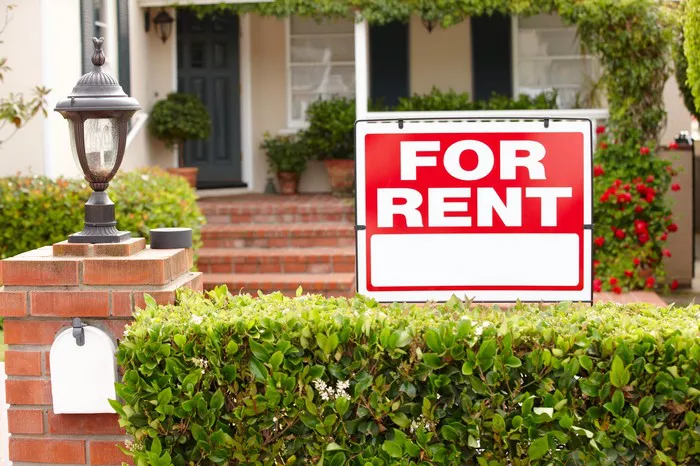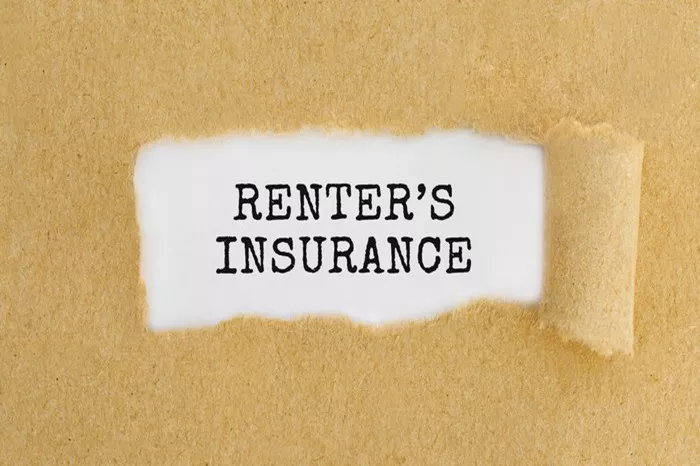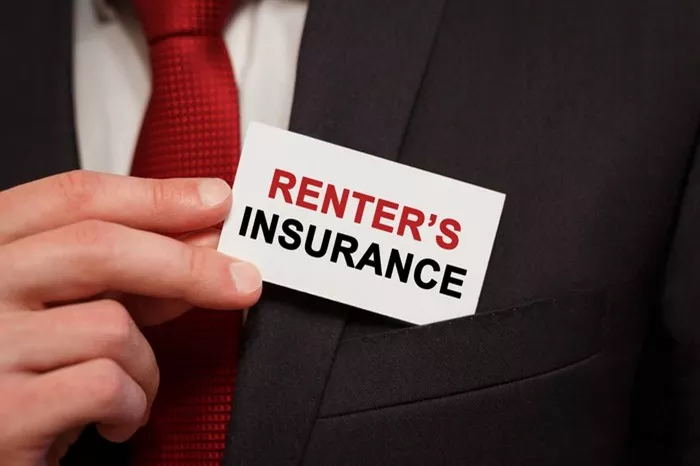Renters insurance is an essential protection for tenants, covering personal property and liability in case of unexpected events like theft, fire, or water damage. While many renters might overlook this coverage, it offers significant peace of mind at a relatively low cost. Understanding how much renters insurance costs can help you make informed decisions about securing your belongings and protecting yourself financially.
Average Cost of Renters Insurance
According to NerdWallet’s latest rate analysis, the average renters insurance cost in the U.S. is $148 per year, or about $12 per month. This estimate is based on a policy for a hypothetical 30-year-old tenant with $30,000 in personal property coverage, $100,000 in liability coverage, and a $500 deductible. While this nationwide average provides a useful baseline, it’s important to note that renters insurance rates can vary significantly depending on several factors.
Factors Influencing Renters Insurance Rates
1. Location
The cost of renters insurance can vary widely based on where you live. Factors such as local crime rates, weather patterns, and the risk of natural disasters all play a role. For instance, renters in areas prone to hurricanes or tornadoes may face higher premiums due to the increased risk of property damage. Similarly, urban areas with higher crime rates may also see higher insurance costs compared to rural areas.
2. Amount of Coverage
The amount of personal property coverage you choose directly impacts your premium. Higher coverage limits mean higher premiums. It’s important to accurately assess the value of your belongings to ensure you have adequate coverage. Additionally, liability coverage limits can also affect your rates. Opting for higher liability protection will increase your premium but provides greater financial security in case of a lawsuit or medical expenses.
3. Deductible Amount
Your deductible is the amount you pay out of pocket before your insurance coverage kicks in. Policies with higher deductibles generally have lower premiums, while lower deductibles result in higher premiums. When choosing a deductible, consider your ability to pay out-of-pocket costs in the event of a claim. Balancing a reasonable premium with an affordable deductible is key to finding the right policy.
4. Credit Score
Insurers often use credit scores to assess risk and determine premiums. Renters with higher credit scores may receive lower rates, while those with lower credit scores might face higher premiums. Maintaining a good credit score can help you secure more favorable insurance rates.
5. Claims History
Your history of insurance claims can also impact your renters insurance cost. Frequent claims can signal higher risk to insurers, leading to higher premiums. Conversely, a clean claims history may result in lower rates. It’s advisable to reserve filing claims for significant losses to avoid premium increases.
6. Policy Discounts
Many insurance companies offer discounts that can help lower your renters insurance cost. Common discounts include bundling renters insurance with auto insurance, having safety features like smoke detectors or security systems, and being a non-smoker. Ask your insurer about available discounts to see if you qualify for any savings.
State-by-State Renters Insurance Costs
Renters insurance costs can differ substantially from state to state. Here’s a closer look at the average annual premiums for renters insurance across various states:
- California: $182 per year
- Florida: $188 per year
- New York: $155 per year
- Illinois: $156 per year
These figures highlight the geographic variation in renters insurance costs. States with higher risks of natural disasters, such as Texas and Florida, generally have higher premiums compared to states with lower risks.
Coverage Types and Their Impact on Cost
Understanding the different types of coverage included in renters insurance policies can help you tailor your policy to your needs and budget. The primary types of coverage are:
1. Personal Property Coverage
This covers the cost to repair or replace your belongings if they are damaged, stolen, or destroyed due to covered perils. Common perils include fire, theft, vandalism, and certain weather-related events. Personal property coverage limits can range from $10,000 to over $100,000, depending on your policy and the value of your belongings.
2. Liability Coverage
Liability coverage protects you if someone is injured on your property or if you accidentally damage someone else’s property. This coverage can help pay for medical bills, legal fees, and damages awarded in a lawsuit. Standard policies typically offer liability coverage starting at $100,000, but you can opt for higher limits if needed.
3. Additional Living Expenses (ALE)
If your rental unit becomes uninhabitable due to a covered loss, ALE coverage can help pay for temporary housing and additional expenses incurred while your home is being repaired. This can include hotel bills, restaurant meals, and other necessary costs. ALE coverage limits vary by policy.
4. Medical Payments to Others
This coverage pays for minor medical expenses if a guest is injured on your property, regardless of fault. Typical limits range from $1,000 to $5,000.
See Also: How Does Renters Insurance Work For Apartments
How to Choose the Right Amount of Coverage
Selecting the right amount of coverage is crucial to ensuring you are adequately protected without overpaying for insurance. Here are some steps to help you determine the appropriate coverage limits:
1. Inventory Your Belongings
Create a detailed inventory of your personal property, including estimated values. This will help you assess the total value of your belongings and determine how much personal property coverage you need.
2. Assess Liability Risks
Consider your liability risk based on your lifestyle and activities. If you frequently entertain guests or have higher risk factors, such as a pet, you might want to opt for higher liability coverage.
3. Evaluate Additional Coverage Needs
Think about any additional coverage you might need, such as high-value items like jewelry or electronics. Some policies offer scheduled personal property coverage for items with values exceeding standard limits.
4. Consider Your Budget
Balance your coverage needs with your budget. While it’s important to have adequate protection, you also want to ensure the premium is affordable. Adjusting deductibles and exploring discounts can help manage costs.
Ways to Save on Renters Insurance
While renters insurance is generally affordable, there are several strategies you can use to save even more on your policy:
1. Bundle Policies
Many insurers offer discounts if you bundle renters insurance with other policies, such as auto or life insurance. Bundling can lead to significant savings and simplify your insurance management.
2. Increase Your Deductible
Choosing a higher deductible can lower your premium. Just be sure you can afford the out-of-pocket costs in case you need to file a claim.
3. Improve Home Security
Installing safety features like smoke detectors, deadbolt locks, and security systems can qualify you for discounts. These features reduce the risk of damage or theft, making you a lower risk for insurers.
4. Maintain a Good Credit Score
A higher credit score can result in lower insurance premiums. Paying bills on time and managing credit responsibly can help you maintain a favorable credit score.
5. Shop Around
Compare quotes from multiple insurance providers to find the best rate. Different insurers offer varying rates and discounts, so it’s worth taking the time to shop around.
6. Ask About Discounts
Inquire about any available discounts, such as those for non-smokers, seniors, or members of certain organizations. Taking advantage of all eligible discounts can lower your premium.
Real-World Examples of Renters Insurance Costs
To give you a better idea of how renters insurance costs can vary, here are some real-world examples:
- A 25-year-old renter in Atlanta, GA, with $20,000 in personal property coverage, $100,000 in liability coverage, and a $500 deductible might pay around $180 per year.
- A 35-year-old renter in Denver, CO, with $30,000 in personal property coverage, $100,000 in liability coverage, and a $1,000 deductible might pay about $140 per year.
- A 40-year-old renter in San Francisco, CA, with $50,000 in personal property coverage, $300,000 in liability coverage, and a $500 deductible might pay approximately $210 per year.
These examples illustrate how factors like location, age, and coverage limits can influence the cost of renters insurance. By tailoring your policy to your specific needs and circumstances, you can find affordable coverage that provides adequate protection.
The Value of Renters Insurance
While the cost of renters insurance is relatively low, the value it provides is significant. Here are some key benefits of having renters insurance:
1. Financial Protection
Renters insurance covers the cost to repair or replace your personal belongings in case of covered events like fire, theft, or water damage. This can save you from substantial out-of-pocket expenses.
2. Liability Coverage
Liability coverage protects you if someone is injured on your property or if you accidentally damage someone else’s property. This can help cover legal fees, medical bills, and damages, preventing financial strain.
3. Peace of Mind
Knowing you have insurance coverage provides peace of mind. You can rest easy knowing that your belongings are protected and that you have financial support in case of unexpected events.
4. Required by Landlords
Many landlords require tenants to have renters insurance as a condition of the lease. This ensures that both the tenant and landlord are protected in case of damages or liability claims.
Conclusion
Renters insurance is an affordable and valuable investment for tenants. The average cost of $148 per year, or about $12 per month, provides essential protection for your personal property and liability. While rates can vary based on factors like location, coverage amount, and deductible, understanding these variables can help you find the right policy at a reasonable price.
By taking the time to assess your coverage needs, shop around for quotes, and explore available discounts, you can secure renters insurance that offers comprehensive protection without breaking the bank. Whether you’re renting an apartment in a bustling city or a house in a quiet suburb, renters insurance ensures you’re prepared for the unexpected, providing financial security and peace of mind.
[inline_related_posts title=”You Might Be Interested In” title_align=”left” style=”list” number=”6″ align=”none” ids=”2817,2724,2648″ by=”categories” orderby=”rand” order=”DESC” hide_thumb=”no” thumb_right=”no” views=”no” date=”yes” grid_columns=”2″ post_type=”” tax=””]






















